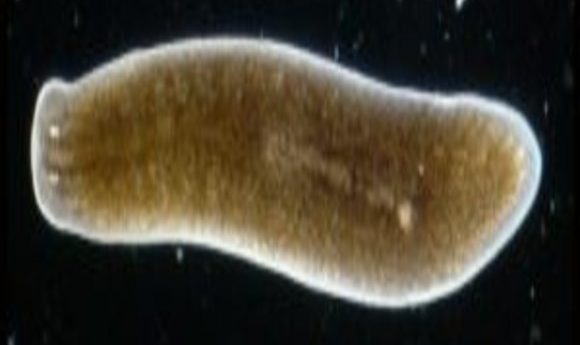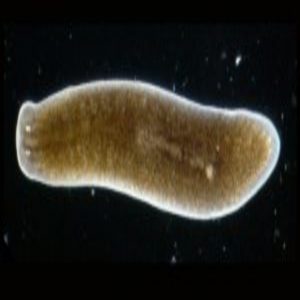Putting Some Muscle into Planarian Regeneration

Researchers discovered that muscle plays a surprising role in planarian regeneration.

Some animals have the incredible ability to regenerate lost body parts—imagine a starfish regrowing its limbs or a lizard regenerating its tail. The planarian, a type of flatworm, actually regenerates its entire body when cut in half.
A research team at the Whitehead Institute for Biomedical Research at the Massachusetts Institute of Technology led by Peter Reddien recently conducted a study on how planarian regeneration occurs on a molecular level. In their study published in Nature, they found that muscle cells are the key drivers of regeneration in planaria.
Reddien studies how animals like planaria determine which body part is missing on the molecular level so that they can regenerate the correct part. “We look for conditions in which we inhibit specific genes and the animals regenerate the wrong things,” said Reddien. “Those genes are candidates to encode the instructions for regeneration.”
Reddien’s team previously identified a group of genes called position control genes (PCGs) that provide cells with region-specific instructions for regenerating certain body parts. PCGs are expressed in planarian muscle cells, which led the team to further investigate the role of muscle during regeneration.
“We inhibited specific genes in order to ablate specific types of muscle cells,” said Reddien. “When you inhibit the right genes, you see the slow and steady depletion of these muscle fibers.” The researchers depleted two types of muscle fibers: longitudinal fibers, which run along the anterior-posterior length of the animal, and circular fibers, which run medial-laterally.
When they depleted the longitudinal fibers, the planarians completely failed to regenerate after amputation. On the other hand, when they depleted the circular fibers, the planarians regenerated two heads instead of one. “That was a type of defect that had never been seen before—that was a completely novel outcome,” said Reddien.
Reddien suspects that the muscle cells control regeneration by instructing stem cells about what body part to regenerate. “We think of these fibers as the orchestrators of the process of regeneration,” said Reddien. He hopes to pursue a greater understanding of how this works. “We’re very interested in studying the molecules involved in the biology of these individual muscle fibers.”
“A surprising conclusion drawn from [this study] is that muscles are more than just a structural element of the body; they can convey signals that determine whether and how lost body parts are built, at least in planarians,” said Kerstin Bartscherer of the Max Planck Institute for Molecular Biomedicine, who was not involved in the study.
Reddien is optimistic that research on regeneration can be applied to medical therapies in the future. After all, if starfish, lizards, and planaria can regenerate, will we someday figure out how to help humans perform similar feats?
“Many animals possess regenerative feats beyond what humans can do,” said Reddien. “The question is, what is different between what happens at the wounds of these animals versus humans? Once we have those answers, we can ask what is going wrong in human wounds where there is no repair, and whether there are any interventions that can be designed.”